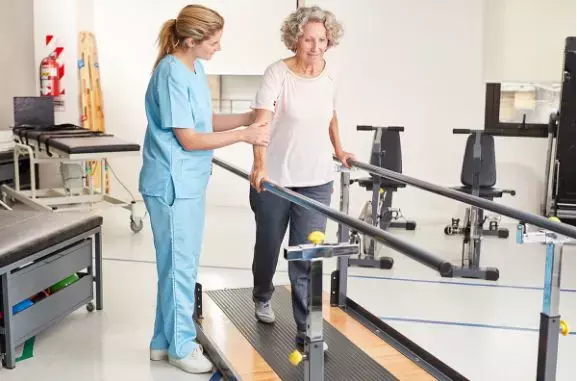- Home
- Medical news & Guidelines
- Anesthesiology
- Cardiology and CTVS
- Critical Care
- Dentistry
- Dermatology
- Diabetes and Endocrinology
- ENT
- Gastroenterology
- Medicine
- Nephrology
- Neurology
- Obstretics-Gynaecology
- Oncology
- Ophthalmology
- Orthopaedics
- Pediatrics-Neonatology
- Psychiatry
- Pulmonology
- Radiology
- Surgery
- Urology
- Laboratory Medicine
- Diet
- Nursing
- Paramedical
- Physiotherapy
- Health news
- Fact Check
- Bone Health Fact Check
- Brain Health Fact Check
- Cancer Related Fact Check
- Child Care Fact Check
- Dental and oral health fact check
- Diabetes and metabolic health fact check
- Diet and Nutrition Fact Check
- Eye and ENT Care Fact Check
- Fitness fact check
- Gut health fact check
- Heart health fact check
- Kidney health fact check
- Medical education fact check
- Men's health fact check
- Respiratory fact check
- Skin and hair care fact check
- Vaccine and Immunization fact check
- Women's health fact check
- AYUSH
- State News
- Andaman and Nicobar Islands
- Andhra Pradesh
- Arunachal Pradesh
- Assam
- Bihar
- Chandigarh
- Chattisgarh
- Dadra and Nagar Haveli
- Daman and Diu
- Delhi
- Goa
- Gujarat
- Haryana
- Himachal Pradesh
- Jammu & Kashmir
- Jharkhand
- Karnataka
- Kerala
- Ladakh
- Lakshadweep
- Madhya Pradesh
- Maharashtra
- Manipur
- Meghalaya
- Mizoram
- Nagaland
- Odisha
- Puducherry
- Punjab
- Rajasthan
- Sikkim
- Tamil Nadu
- Telangana
- Tripura
- Uttar Pradesh
- Uttrakhand
- West Bengal
- Medical Education
- Industry
Endovascular revascularization and exercise combo more effective in intermittent claudication

A combination therapy of endovascular revascularization followed by supervised exercise is clinically and economically a more attractive approach than supervised exercise only for intermittent claudication up to 12-month follow-up, suggests results from a recently published study in Cardiology .
In spite of many previous studies ,the cost-effectiveness of the combination therapy as compared with supervised exercise is still not well defined. Using data from the Endovascular Revascularization and Supervised Exercise (ERASE) study, the cost-effectiveness was analysed.
The study population included two hundred twelve patients who were randomly assigned to the combination therapy (n=106) or supervised exercise only (n=106) and were followed for 12 months. Cumulative costs per patient were collected using the in-hospital resource utilization data and cost-questionnaires. Quality-adjusted life years were estimated using the EuroQol-5D questionnaire. Incremental cost-effectiveness ratios were calculated from both the health care and societal perspective.
Results revealed some important facts.
- As compared with supervised exercise only, the combination therapy cost an additional €1.462 (99% CI, 388 to 3862) from the health care perspective and €161 (99% CI, −2286 to 3106) from the societal perspective.
- Accumulated quality-adjusted life- years during 1 year follow-up were 0.042 (99% CI, −0.009 to 0.118) higher in the combination therapy group.
- The incremental cost-effectiveness ratio was €34.810 from the health care perspective and €3.833 from the societal perspective.
- Compared with supervised exercise, at a willingness-to-pay threshold of €80.000 per quality-adjusted life-year, the combination therapy had a probability of 87% and 95% of being cost-effective from the health care and societal perspective, respectively.
The research team concluded that combined therapy was an attractive strategy both clinically and economically up to 1 year. The long-term cost-effectiveness of combined therapy remains unknown.
For full article follow the link: Endovascular Revascularization Plus Supervised Exercise Versus Supervised Exercise Only for Intermittent Claudication: A Cost-Effectiveness Analysis Circ Cardiovasc Interv, 2021 Jul 13
Source: Cardiology
Dr Satabdi Saha (BDS, MDS) is a practicing pediatric dentist with a keen interest in new medical researches and updates. She has completed her BDS from North Bengal Dental College ,Darjeeling. Then she went on to secure an ALL INDIA NEET PG rank and completed her MDS from the first dental college in the country – Dr R. Ahmed Dental College and Hospital. She is currently attached to The Marwari Relief Society Hospital as a consultant along with private practice of 2 years. She has published scientific papers in national and international journals. Her strong passion of sharing knowledge with the medical fraternity has motivated her to be a part of Medical Dialogues.
Dr Kamal Kant Kohli-MBBS, DTCD- a chest specialist with more than 30 years of practice and a flair for writing clinical articles, Dr Kamal Kant Kohli joined Medical Dialogues as a Chief Editor of Medical News. Besides writing articles, as an editor, he proofreads and verifies all the medical content published on Medical Dialogues including those coming from journals, studies,medical conferences,guidelines etc. Email: drkohli@medicaldialogues.in. Contact no. 011-43720751


